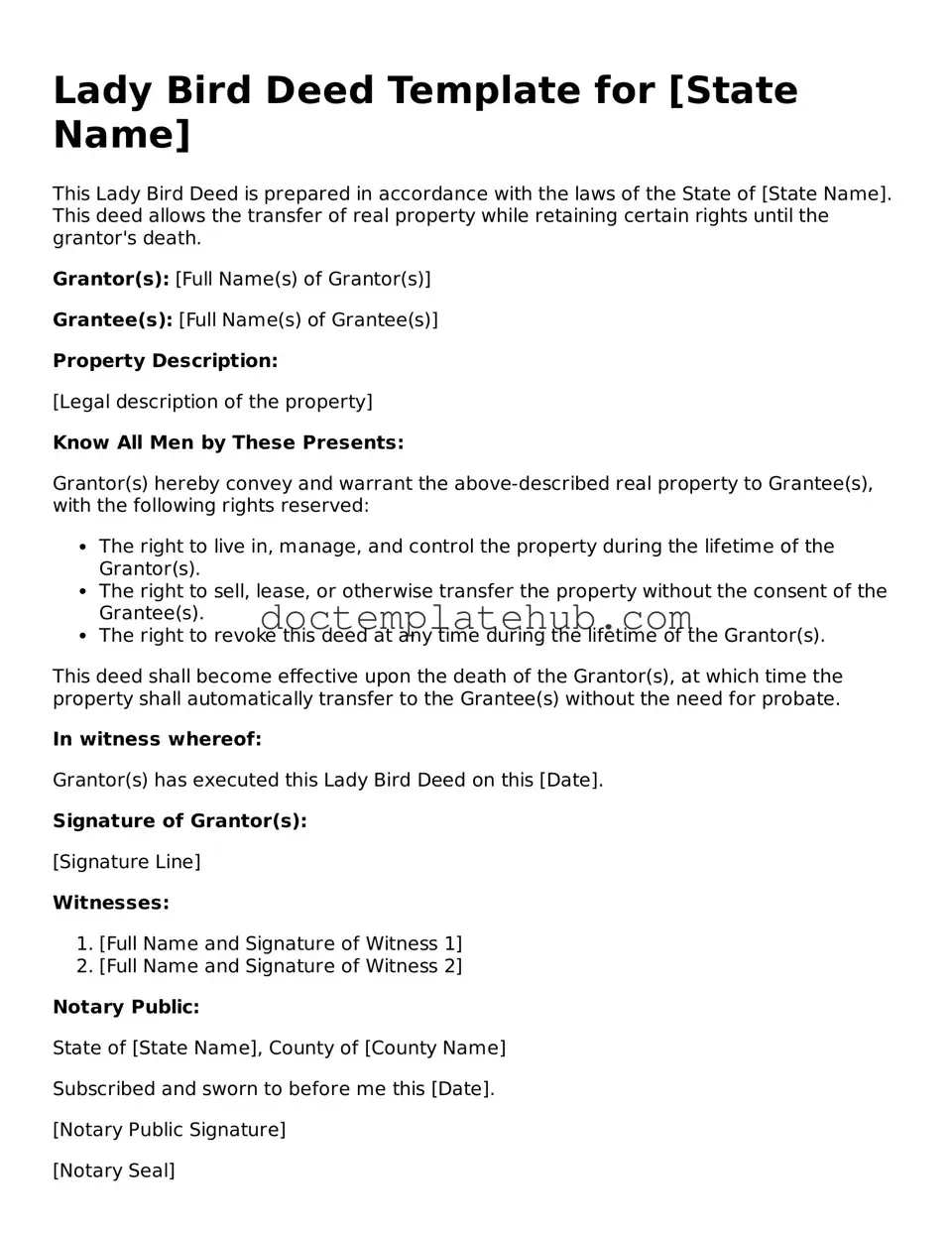What is a Lady Bird Deed?
A Lady Bird Deed, also known as an enhanced life estate deed, allows property owners to transfer their property to beneficiaries while retaining the right to use and control the property during their lifetime. This type of deed provides significant advantages, such as avoiding probate and allowing the original owner to sell or mortgage the property without the beneficiaries' consent. It is particularly useful for individuals looking to pass on their property without the complications of a traditional transfer upon death.
How does a Lady Bird Deed work?
When a property owner executes a Lady Bird Deed, they maintain a life estate in the property, meaning they can live in or use the property as they wish. Upon the owner's death, the property automatically transfers to the named beneficiaries without going through probate. This seamless transition helps ensure that the property remains within the family or is passed on according to the owner's wishes, all while avoiding the lengthy and often costly probate process.
What are the benefits of using a Lady Bird Deed?
One of the primary benefits of a Lady Bird Deed is its ability to bypass probate. This can save time and money for the beneficiaries. Additionally, the original owner retains full control over the property, allowing them to sell or modify it as needed without needing consent from the beneficiaries. This flexibility can be crucial for individuals who may need to make financial decisions regarding their property later in life. Furthermore, a Lady Bird Deed can protect the property from creditors in certain situations, providing an additional layer of security for the owner's estate.
Are there any drawbacks to a Lady Bird Deed?
While a Lady Bird Deed offers many advantages, there are some potential drawbacks to consider. For instance, if the property owner requires Medicaid assistance, the property may still be counted as an asset, which could affect eligibility. Additionally, the deed does not protect against estate taxes, which might still apply upon the owner's death. Finally, if the beneficiaries are not prepared to manage the property after the owner's passing, this could lead to disputes or complications. It is essential to weigh these factors and consult with a legal expert before proceeding with a Lady Bird Deed.
